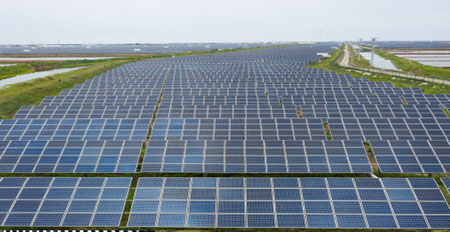Harnessing the Power of the Sun: Unveiling the Secrets of Solar Power Cables
 Sep 08, 2023|
Sep 08, 2023| View:677
View:677Solar power, derived from sunlight, is an efficient and sustainable source of clean energy. As solar power systems become increasingly popular, it is essential to understand the crucial role of solar power cables in transmitting electricity from photovoltaic (PV) panels to the grid or storage systems. This comprehensive guide aims to provide insights into the key aspects of solar power cables, including their construction, types, installation, and maintenance.
Solar Power Cable Construction:
Solar power cables are specifically designed to withstand the unique demands of solar energy systems. They are typically constructed with the following components:
Conductor: The conductor carries the electrical current and is usually made of high-quality copper or aluminum.
Insulation: Solar cables feature specialized insulation materials, such as cross-linked polyethylene (XLPE) or ethylene propylene rubber (EPR), which offer excellent electrical and thermal properties.Jacket: The outer jacket provides protection against environmental factors like moisture, UV radiation, and extreme temperatures.
Types of Solar Power Cables:
Solar power cables are available in various types, each suited for specific applications within a solar power system:
Photovoltaic (PV) Wire: PV wires are primarily used for interconnecting solar panels and are suitable for both outdoor and indoor installations.
Direct Burial Cable: Designed for underground installations, direct burial cables have enhanced insulation and protection against moisture and soil conditions.
Tray Cable: Tray cables are used for wiring between solar panels and combiner boxes, inverters, or charge controllers. They are suitable for both outdoor and indoor use and can withstand harsh environmental conditions.

Underground Feeder Cable (UF): UF cables are used for long-distance underground connections, such as routing power from an array to an inverter.
Installation Considerations:
Proper installation of solar power cables is crucial to ensure system efficiency and safety. Some key considerations include:
Adequate Sizing: Cables must be sized appropriately to minimize voltage drop and ensure efficient power transmission.
Conduit and Raceway: Using conduit or raceway to protect cables against physical damage and exposure to sunlight is recommended.
Grounding: Following local electrical codes, grounding of solar power cables is essential for safety and protection against electrical faults.
Temperature Ratings: Selecting cables with suitable temperature ratings ensures optimal performance and longevity in varying weather conditions.
Maintenance and Safety:
Regular maintenance and monitoring play a significant role in the performance and longevity of solar power cables. Key aspects to consider include:
Visual Inspections: Regularly inspect cables for signs of damage, wear, or degradation. Replace any damaged cables promptly.
Cable Management: Proper cable management, including securing and organizing cables, prevents physical stress and damage.
Protection Against Environmental Factors: Shield cables from direct sunlight, extreme temperatures, moisture, and corrosive substances to maintain their integrity.
Professional Assistance: Consult qualified electricians or solar technicians for any maintenance or repair work.
Conclusion:
Solar power cables are vital components of photovoltaic systems, enabling the efficient and reliable transmission of clean energy. Understanding their construction, types, installation considerations, and maintenance requirements is crucial for optimizing the performance and safety of solar power systems. By adhering to proper installation practices and performing routine maintenance, we can ensure the seamless operation and longevity of solar power cables, contributing to the widespread adoption of renewable energy.










